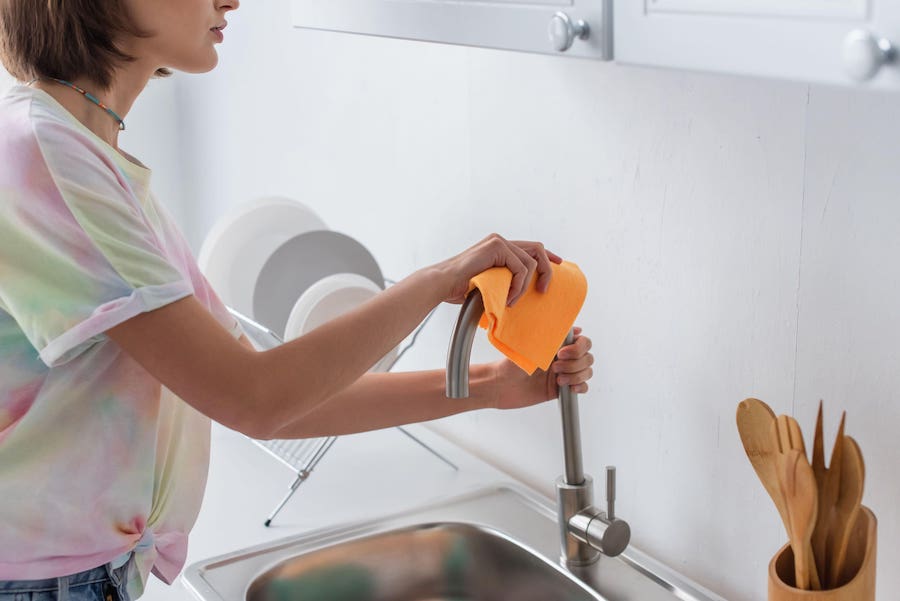The dirtiest things in the home and how to clean them
Stop germs spreading with these expert tips
Housework, filthy chores and finding time to tackle those nasty tasks while juggling a hectic lifestyle isn’t easy.
But germs fester and the reality is sometimes we don’t even realise where they’re running rancid.
Indeed, according to research by consumer insight business, Vypr, while the majority of Brits clean their homes regularly, 22% said they have not cleaned their kitchen for a month or longer; and 17% said the same length of time for their toilet.
But where to begin when the bleach hasn’t seen the light of day in weeks and your sanitiser is sitting idle?
“Break down the cleaning task per room, tackle each one methodically and for a set amount of time,” advises Laura Harnett, founder of Seep eco cleaning tools. “Then reward yourself, have a break and do another job another time.
“It doesn’t all need to be done in one go, but toilets and kitchens certainly need to be cleaned weekly to keep them hygienic – and stop germs spreading in the obvious places as well as the more unusual ones.”
To put you on the front foot, these are the dirtiest items which need cleaning more than you think…
Tap handles

Regularly washing our hands became second nature during the pandemic, but tap handles are a key place where germs linger. They’re turned on with dirty fingers, turned off with clean ones, and germs are picked up again.
“You don’t need to use harsh chemicals to stop germs spreading,” says Harnett. “White vinegar is an amazing product that’s cheap, antibacterial and perfect for cleaning all surfaces, including taps.
“Simply wipe neat white vinegar with a soft cloth and it will eradicate all germs. Finish off by rubbing half a lemon over the taps as it brings up a fantastic shine on chrome.”
Toothbrush holder

“Toothbrush holders, often hard to clean, are usually placed near toilets, making them highly susceptible to bacteria due to the spray of faecal debris when the toilet is flushed,” highlights Zara O’Hare, home expert from Land of Rugs.
“Store toothbrushes in a movable, easy-to-clean cup. Soak it in warm water with a bit of bleach for 30 minutes, then rinse and soak it in clean water for another 30 minutes to remove bleach residue.”
Alternatively, she says you can use a cup that’s dishwasher safe.
Coffee machine

“Given the dark and damp, it’s not surprising your coffee maker is a prime spot for bacteria, mould and mildew to grow,” warns O’Hare.
“Clean by adding up to four cups of undiluted vinegar to the reservoir, letting it stand for 30 minutes, and running it through the unit.
“Follow with two to three cycles of fresh water until the vinegar odour is gone.” She says you can do this every 40-80 brew cycles, or at least monthly.
Keyboard

It’s a common phenomenon, we drink and eat at our keyboards, whether we’re typing, video calling or searching online, which can result in saliva droplets landing on our keys.
Almost half of those surveyed (45%) clean their keyboards less than once a month, which makes this one of the worst places in the home for bacteria and bugs to linger.
Harnett says: “Turn off your computer and unplug it. Vacuum the keyboard to remove any loose particles. Then dip a soft bamboo cloth in rubbing alcohol and wipe over the keys.
“You can use a cotton bud dipped in the rubbing vinegar to get in between the keys themselves and make sure it’s disinfected.”
Kitchen sponges

“Sponges are big germ culprits because their holes let bacteria thrive, forming tough blobs that are hard to remove,” notes O’Hare.
“Soak your sponge in a diluted bleach solution and run it in the dishwasher (on a high-heat cycle). Alternatively, you can place it in a bowl of water with soap in the microwave.”
TV remote control

“Even if you’re the most meticulous cleaner, you might still ignore some areas you think are clean,” suggests O’Hare. “Your remote control is one of these.”
She says cleaning and disinfecting are easy: “Use disinfectant wipes on the surface of the remote control at least once a week.”
The Press Association
Latest posts by The Press Association (see all)
- Actor Richard Chamberlain dies aged 90 - March 30, 2025
- 5 new books to read this week - March 26, 2025
- 6 things a physio wishes people over 60 would stop doing - March 25, 2025
- NHS reminder to 7.5m people as Covid-19 jab booking system opens - March 25, 2025
- The truth about cholesterol – what you need to know - March 25, 2025




















